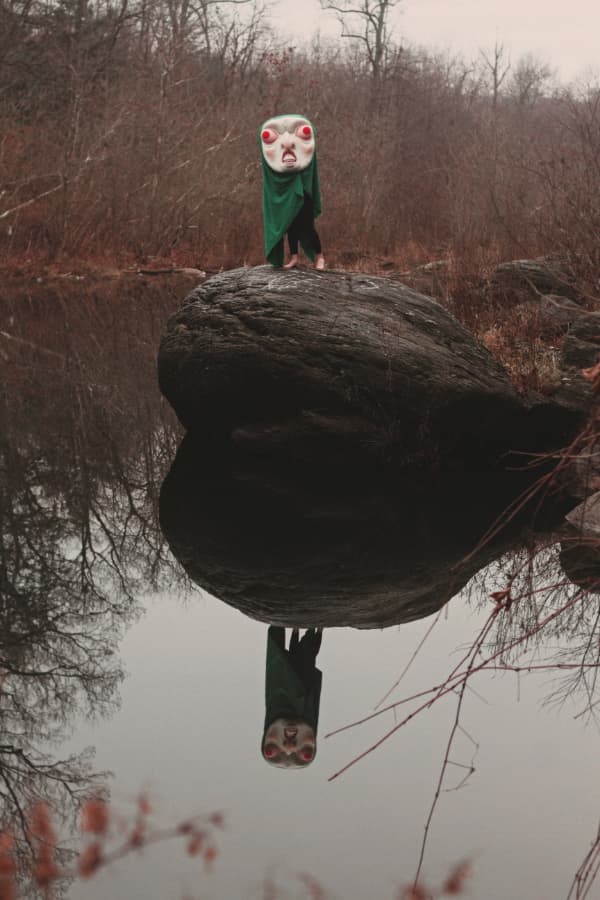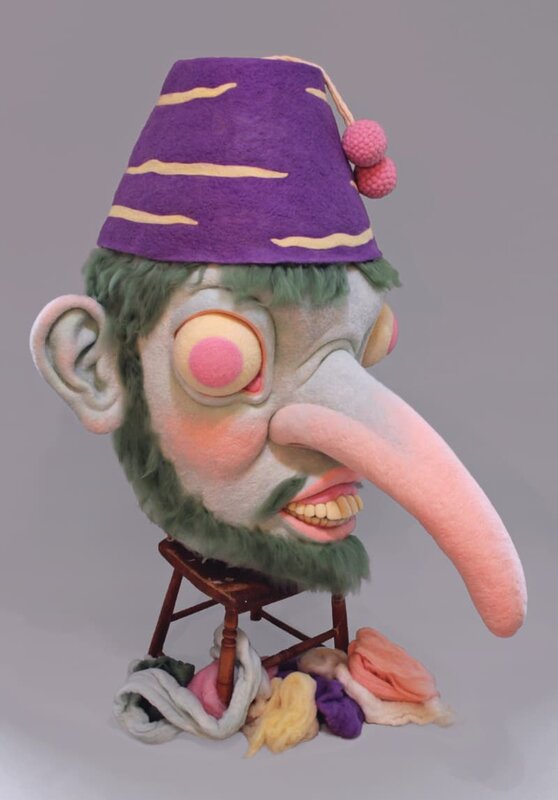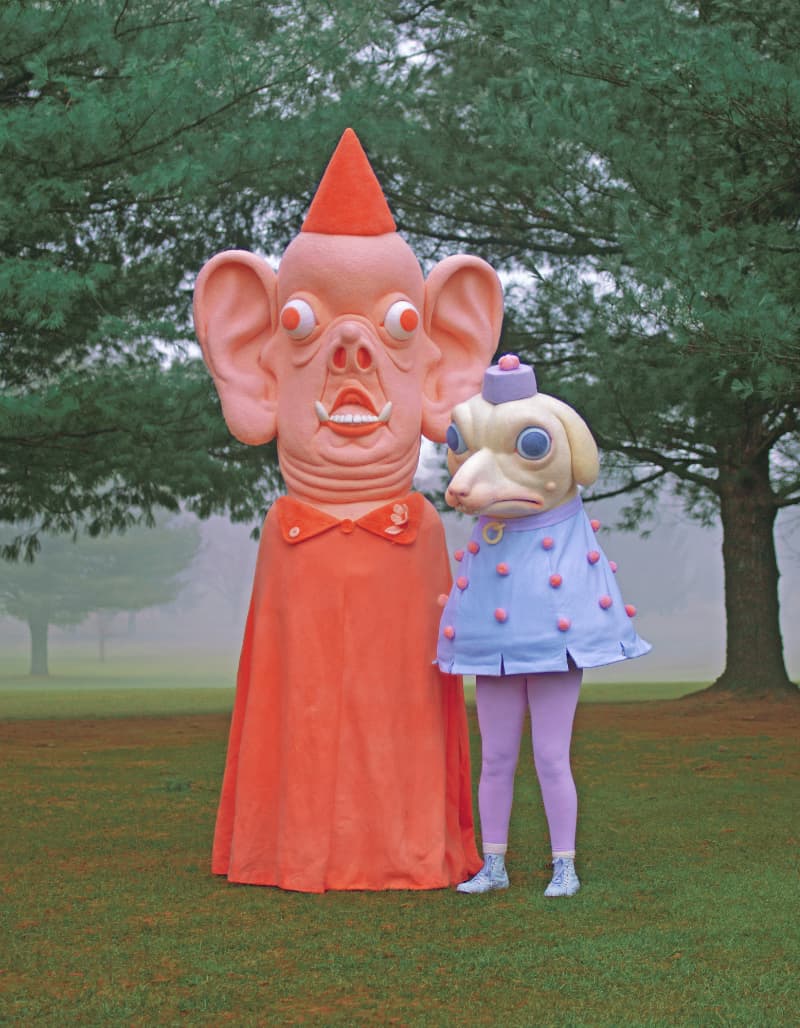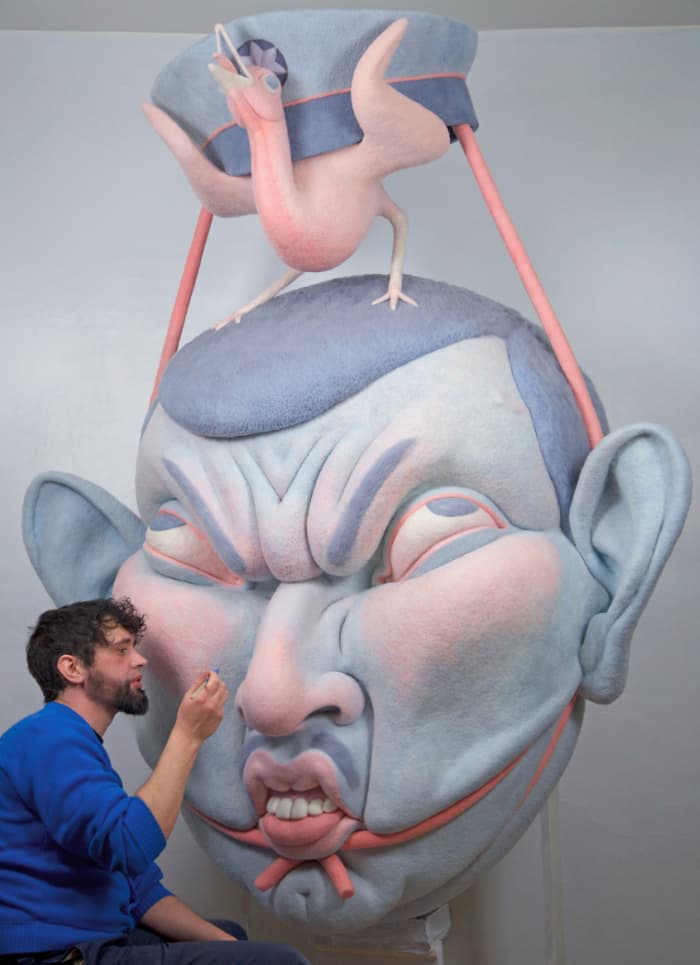
Paolo Puck: Exploring Uncertain Grounds
Paolo Puck is a British-born artist currently residing Europe. Originally trained as an illustrator, he now works primarily in sculpture; a field in which he is self-taught. Best known for his bizarre, whimsical and dreamlike creations rendered in needle-felted wool, Puck’s sculptures give viewers a glimpse of a world inspired by myths and fairy-tales, Jungian theory and Gnosticism. Puck has exhibited in the United States and abroad, with exhibitions at Nucleus Portland, Portland, OR; Samek Art Museum, Lewisburg, PA; Jonathan Levine Gallery, NY, NY and the Royal Scottish Academy, Edinburgh, Scotland, UK.
Pictoplasma: The references you draw on for your characters come from far and wide, including early civilisation, Ancient Greek, Roman and Medieval artworks and Japanese theatre. How do you balance working with these references and developing your own aesthetics?
Paolo Puck: I find that a subject will fascinate me for a while, for example, medieval pilgrim badges, and I’ll spend ages researching and looking at them. Eventually, I kind of lose interest and find something else. It’s often not until later that I’ll look back at my work and say, ‘oh, it definitely had a flavour of that!’, but it’s rarely direct or intentional.
I suppose it’s like hanging out with someone for a while; you take on aspects of their personality. Even though you still have your own way of being, there are now a few other shades thrown in there too. The influence is initially strong, and eventually only an echo remains, but it still shapes you.

How do you approach making a work? What’s the relevance of concept, sketching and design to the actual making or sculpting?
I actually do a shockingly small amount of prep work. A quick sketch or plasticine model is about as much as I do. The rougher the sketch, the better. I don’t like to be completely bound to those original concepts and designs. I like for pieces to be themselves and find their own way into being.
I often just zone out when sculpting and get lost in the flow of the forms, paying no attention to the big picture. Pouring my energy into a new piece through sculpting like that feels like the best way to tap into a pure creative process and bring something into the world that has its own spirit.
A mask is a medium of transformation: visually, to change appearance, socially, as a way to transform the position of the person wearing it in a ritual and for the self, it is a confrontation with our inherent otherness and dimensions of reality. What is your interest in masks?
I’m not sure why masks are something I’m drawn to. I tend to just make things that I feel compelled towards without trying to overthink why, but sometimes I reflect on those things later on. For example, the witch character was something that I continuously came back to in my work. If you had asked me at the time, ‘what’s with the witch theme?’ I’d probably have said, ‘I think witches are neat’. But on reflection, it’s about a troubled childhood with an alcoholic and mentally unwell mother.
A lot of my themes revolve around the blurred lines between something that’s safe or dangerous and beautiful or ugly. On one hand, my mother was meant to be my carer but on the other, she was often a threatening figure that I couldn’t feel safe around. I often explore things in my work that are supposed to be safe and comforting but can instantly flip into the antithesis of those things. Being on that uncertain ground is a common thread in my work.
I have an early memory from childhood of a scary old woman who lived on our street. I suppose we thought she was a witch of sorts and we were told to keep away from her. When my mother was having an episode of alcohol-fuelled psychosis, I would convince myself that the scary old woman had climbed inside my mother’s skin, and it was the old woman who was controlling her and making her act so menacing and strange. I suppose these ways of understanding the human psyche through a mask have been with me from very early on.

Are you interested in the performative aspect of masks?
Most definitely. My first experience with mask making was for Samhain performances (the Gaelic festival marking the end of the harvest season and beginning of winter), which I took part in when I lived in Scotland. One of the reasons I haven’t made many masks in the last couple of years is because it feels like such a dead experience to just trot out these costumes for a photoshoot, besides having the thrill of scaring the odd dog walker in the process! I’d love to get back to making characters that are brought to life with performance, but I haven’t found a crowd for that here in the US.
Your characters often have their mouths partly open, showing teeth, biting their tongues. How did this expression come about? Is there any inspiration for that, any reference, a feeling or attitude that motivates you?
This is another thing that only became significant to me upon deeper reflection. As with my interest in masks, I think that the mouth obsession also partly comes from childhood.
I was never really taken to the dentist as a child and never taught how to brush my teeth or take care of my mouth. This neglect and years of not seeing a dentist meant that my mouth became a serious source of not only severe pain but also anxiety and shame, from late childhood onwards.

It’s not something I consciously think about much, but mouths are definitely an important feature in my work. Those things that we push to the back of our minds leak out the most through the art that we make.
You recently shifted your attention away from masks and costumes to sculptures. What can we expect in the future?
As an artist, I’m not sure I’ll ever settle on doing one thing only. I’m trying to become more at ease with letting chapters come to a close. Then I can take what I’ve learnt from them and move forward. I’m trying not to pay too much mind to what others might expect from me.
At the moment I’m working on a range of weird and, to be honest, horrendously ugly furniture. It’s been nice to work on some quicker and totally carefree projects, with no expectations for their success. I felt as though I needed to loosen up with my work and explore some ways of making that might suit me better.
The success of past projects can sometimes be a burden. It can hinder creative freedom, and I was really starting to feel that. I was starting to become worried about taking chances and making bad work, and if you’re not careful that can stunt you as an artist. I’m taking some time to shed that and make some completely mad things!

Interview by Pictoplasma published in Pictoplasma Magazin – Issue 1: Face Value, 2021





